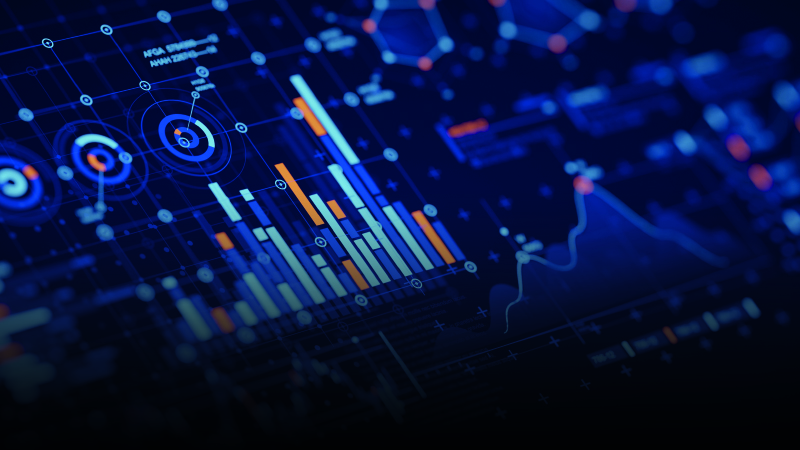How tax technology speeds up tax compliance, provision, and reporting How tax technology transforms the journey of data
Data is king in today’s fast-paced world of finance and tax. Yet, for many companies, the journey of data from disparate sources to financial close, tax returns, and reporting can be torturous.
Data consolidation challenges, complex calculations, and reporting requirements can turn the trek into a daunting ordeal fraught with time-consuming inefficiencies and greater risk of errors.
“One of the biggest challenges facing the the tax profession today is the increasing amount of data that must be processed to prepare financial statements. This data is often coming from a variety of sources, which can make it difficult to reconcile. In addition, as businesses become more globalized, accountants must be able to account for transactions in multiple currencies,” wrote Benjamin Wann, owner of Asheville, N.C. based CFO Consultants, in a blog post.
Fortunately, tax departments are not powerless. With the right technologies in place, they can improve efficiencies, mitigate risk, better serve internal stakeholders, and ultimately drive greater profitability.
To help in-house tax teams better navigate today’s data-driven business environment, we will explore the data consolidation challenges that many face and how tax technology can transform and enhance tax compliance and the financial close.
Data consolidation challenges
One of the greatest challenges facing tax departments is a lack of data integration and automation among systems.
Companies use various software platforms (i.e., accounting software, payroll, etc.) to run their business, and too often these are siloed, legacy systems that lack the capability to “talk” to each other and share data. Unfortunately, for tax and accounting professionals, efficiently and accurately bringing all of the disconnected data together can be very challenging.
When data is siloed in disconnected systems, or tax is dependent on manual processes to enter and aggregate it, it leads to significant inefficiencies and greater risk of manual error.
In today’s complex environment, professionals must have the right technologies in place to work smarter and faster. Furthermore, the rise of remote and hybrid work environments has increased the need for access to real-time data, robust integration capabilities, and great collaboration.
According to the “2023 State of the Corporate Tax Department” report by Thomson Reuters Institute, it is unsurprising that the primary objectives of corporate tax departments for the upcoming year, as indicated by 70% of respondents, revolve around enhancing operational efficiency. These goals encompass improving efficiency and processes (32%), acquiring additional software (14%), automating processes (12%), and expanding the workforce or maintaining current staff (12%).
With the right tax technologies in place, tax departments can effectively consolidate and unlock the power of quality, clean data. Through robust integration tools, they can efficiently collect data, aggregate it, and format it for use in all of their tax processes. Data is then stored in a central repository, making data easy to access and share across functions regardless of their location.
Leveraging such technology speeds up the data consolidation processes and eliminates the risk of manual errors. This enables staff to weed out mundane tasks, like data entry, and spend more time on higher-value functions like strategy and analysis to guide business decisions.
Create dashboards for data clarity
Data consolidation is only half the battle in the journey of data through your tax department. Once the data is consolidated, the next challenge is making sense of it all. Raw numbers and spreadsheets can quickly become overwhelming, and sifting through the data to gain a solid understanding and form strategic business recommendations is a challenge. Enter intuitive dashboards.
Visualizing data through intuitive dashboards and tools like charts and graphs can accelerate comprehension of complex financial information, uncover insights, and help practitioners build confident business recommendations.
Data visualizations and dashboards are changing the way we access, view, and analyze organizational data. This is especially true in accounting and finance roles. Tapping into the potential of your business’s data can deliver major value, but without the right tools, you could miss out on discovering important insights.
Leveraging dashboards that are compatible with Microsoft Power BI or Alteryx enables a seamless transition from disjointed data to analysis and actionable insights for better-informed business decisions. More specifically, tax departments can, for instance:
- Get a comprehensive view of their organization’s tax data;
- Monitor and review key metrics in real-time;
- Find valuable strategic insights on tax matters;
- Compare year-over-year tax trends;
- Identify anomalies; and
- Share intuitive graphs and charts with non-financial colleagues.
By visualizing tax data in real-time with intuitive dashboards, practitioners can optimize tax planning, mitigate risks, and enhance overall tax management.
Tax provision made easier
Perhaps the most critical phase of the data journey is tax provision. Accurately estimating tax liabilities can be complex, especially amid ever-changing tax regulations and evolving business structures.
Through the use of advanced algorithms and automation, tax provision software delivers accurate calculations and minimizes the risk of errors. Streamlining the tax provision process not only ensures compliance, but also saves time, improves efficiencies, and helps companies optimize their tax planning strategies.
According to the Thomson Reuters Institute research, a growing number of tax professionals are seeing the potential benefits. The research found that half of respondents said they use tax provision tools. And when asked about individual tech tools or solutions, respondents said that tax provision tools and direct tax compliance are the most commonly used technology solutions being used by corporate tax departments.
Those tax professionals who use corporate tax provision software said they can accelerate processes by as much as 50%, while also improving linkages between tax and compliance, strengthening internal controls, and producing quality deliverables.
When looking for tax provision software, consider a solution that delivers such features and functionality as:
- Dashboard options for monitoring key performance indicators, which helps users better understand where to allocate resources.
- Access to provision data to feed in other tools for visualizations to easily facilitate multi-period comparisons and trend analyses.
- The ability to analyze data in seconds and quickly drill down from consolidated amounts to the supporting detail.
- Flexible data dimensions to store and perform calculations.
Through this newfound efficiency, in-house tax teams can speed up the financial close process, improve audit readiness, and ultimately save both time and money.
Transform your tax department’s journey of data
The journey of data from consolidation to tax provision is undoubtedly fraught with challenges. But it doesn’t have to be.
By automating data consolidation, providing clear dashboards for analysis, and simplifying tax provision, technology enables tax professionals to navigate the journey with greater confidence.
In an era where data reigns supreme, embracing tax technology is critical for tax departments looking to increase efficiencies to do more with less. The time to act is now.






